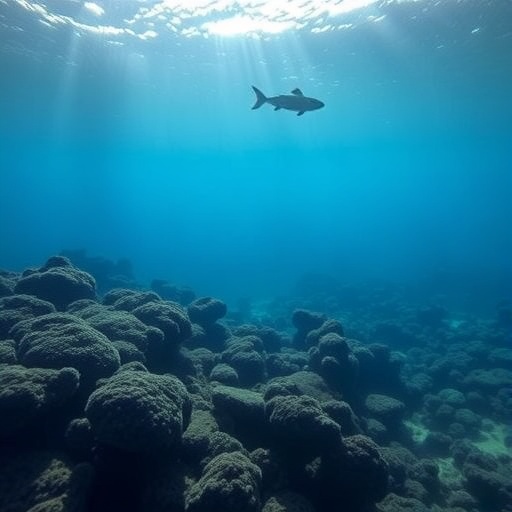In an era marked by unprecedented marine ecosystem decline, a coalition of marine scientists and practitioners spanning 18 countries has sounded an urgent call to overhaul the regulatory frameworks governing marine and coastal restoration projects. Led by Swansea University, this international team highlights a critical bottleneck: archaic and overly intricate permitting systems that stifle the pace and scale of ecosystem recovery efforts at a time when the health of the oceans hangs in a precarious balance.
The group’s findings are meticulously detailed in a groundbreaking paper published in Cell Reports Sustainability, where they present a compelling case for rethinking marine restoration licensing. Their research illuminates a paradox of conservation: while well-intentioned regulations aim to shield marine life, they often place insurmountable barriers before the very projects designed to rejuvenate these fragile environments. This paradox underscores the pressing necessity for regulatory reforms that embrace flexibility, encourage experimentation, and are attuned to the dynamic realities of marine ecosystem science.
Marine ecosystems such as coral reefs, mangroves, seagrasses, and salt marshes are not merely scenic coastal features; they are linchpins of biodiversity, carbon sequestration, and coastal protection. However, these systems are deteriorating at an alarming rate globally, jeopardizing the ecological services they provide to both human societies and marine life. Ambitious international commitments, including the UN Decade on Ecosystem Restoration and the Kunming–Montreal Global Biodiversity Framework, have set the ambitious target of reversing degradation on 30% of ecosystems by 2030. Yet, the researchers warn that current licensing regimes are a significant impediment, delaying restoration initiatives and diluting their impact.
Associate Professor Richard Unsworth, the lead author and a renowned figure in marine restoration science, poignantly describes the regulatory impasse: “The very regulations meant to protect marine life are often blocking the projects designed to restore it. We urgently need smarter, more flexible systems that encourage innovation rather than stifle it.” Unsworth’s unique position at the intersection of academia and practical conservation, exemplified by his leadership roles in Swansea’s Marine Restoration and Conservation MSc programme and Project Seagrass, lends deep insight into these systemic challenges.
Central to the team’s argument is an acknowledgment that marine restoration is a nascent discipline, distinct in complexity from terrestrial restoration. Failures, rather than being setbacks, are intrinsic and informative phenomena essential for iterative learning and advancement. However, current regulatory frameworks are inflexible and cumbersome, making it slow, expensive, or, in some cases, downright impossible to obtain permits for projects that demonstrably benefit marine habitats.
Compounding these challenges is the evolving context of climate change. Restoration can no longer be a nostalgic effort to recreate historical baselines; rather, it must generate ecosystems that are resilient in the face of rapidly changing environmental conditions. This forward-looking perspective necessitates adaptive and innovative methodologies that traditional permitting processes are ill-equipped to accommodate, thereby highlighting the need for regulatory systems that evolve alongside scientific understanding.
Another dimension emphasized by the researchers is social equity. Indigenous and local communities often hold vital ecological knowledge and have livelihoods deeply intertwined with marine environments. Their inclusion is not just a matter of fairness, but a prerequisite for restoration projects to be culturally appropriate, effective, and sustainable. Yet, the current regulatory landscape frequently overlooks or marginalizes these voices, underscoring the need for more inclusive permitting processes.
The study further outlines six strategic reforms designed to catalyze restoration momentum: embracing cutting-edge tools such as assisted migration and genetic interventions, fostering “innovation sandpits” to safely trial novel approaches, establishing dedicated restoration zones with expedited approvals, mandating transparent reporting on project outcomes including failures, aligning permit durations with ecological timescales rather than administrative cycles, and removing financial barriers while introducing positive incentives to encourage restoration activities. These reforms collectively envision a paradigm shift from rigid control to adaptive stewardship.
It is crucial to note that the call for reform does not equate to deregulation. Instead, the authors advocate for evidence-based, adaptive licensing frameworks that balance environmental safeguards with the necessity for innovation and speed. Without this balance, the international community’s commitments to restore marine ecosystems risk becoming hollow promises.
Dr. Elizabeth Lacey, a co-author affiliated with Project Seagrass, underscores the urgency: “We have a narrow window to turn the tide on ocean decline. Smarter permitting could be the key to unlocking large-scale restoration at the speed the planet needs.” This sentiment reflects broader concerns about the accelerating pace of environmental degradation amidst a tapestry of bureaucratic inertia.
The researchers’ methodological approach, grounded in computational simulation and modeling, affords a robust analytical foundation to understand the complex interactions between regulatory frameworks and restoration efficacy. Their work illuminates pathways toward regulatory renewal that are scientifically sound and socio-ecologically sensitive.
This research arrives at a pivotal moment when global biodiversity is in a state of crisis, and the need for scalable, impactful restoration has never been greater. By exposing the systemic flaws in permitting processes and offering actionable reforms, the study provides a beacon of hope and a blueprint for policymakers, conservationists, and stakeholders eager to safeguard ocean health.
In sum, the consortium led by Swansea University deftly dissects the paradoxes entrenched in marine restoration governance and propels a vision for adaptive, inclusive, and innovation-friendly policies. Such transformation is indispensable if restoration ambitions under global frameworks are to move from aspiration to tangible reality in the face of ongoing environmental threats.
Subject of Research: Not applicable
Article Title: Rethinking marine restoration permitting to urgently advance efforts
News Publication Date: 1-Oct-2025
Web References:
- Paper in Cell Reports Sustainability: https://www.cell.com/cell-reports-sustainability/fulltext/S2949-7906(25)00222-8
- UN Decade on Ecosystem Restoration: https://www.decadeonrestoration.org/
- Kunming–Montreal Global Biodiversity Framework: https://www.cbd.int/gbf
- Project Seagrass: https://www.projectseagrass.org/
References:
DOI Link: http://dx.doi.org/10.1016/j.crsus.2025.100526
Image Credits: Francesca Page
Keywords: Ecological restoration, Conservation priorities, Conservation ecology, Seagrasses, Marine plants, Seaweeds, Salt marshes, Marine ecosystems, Coral, Algae, Plants, Mangroves, Shellfish




